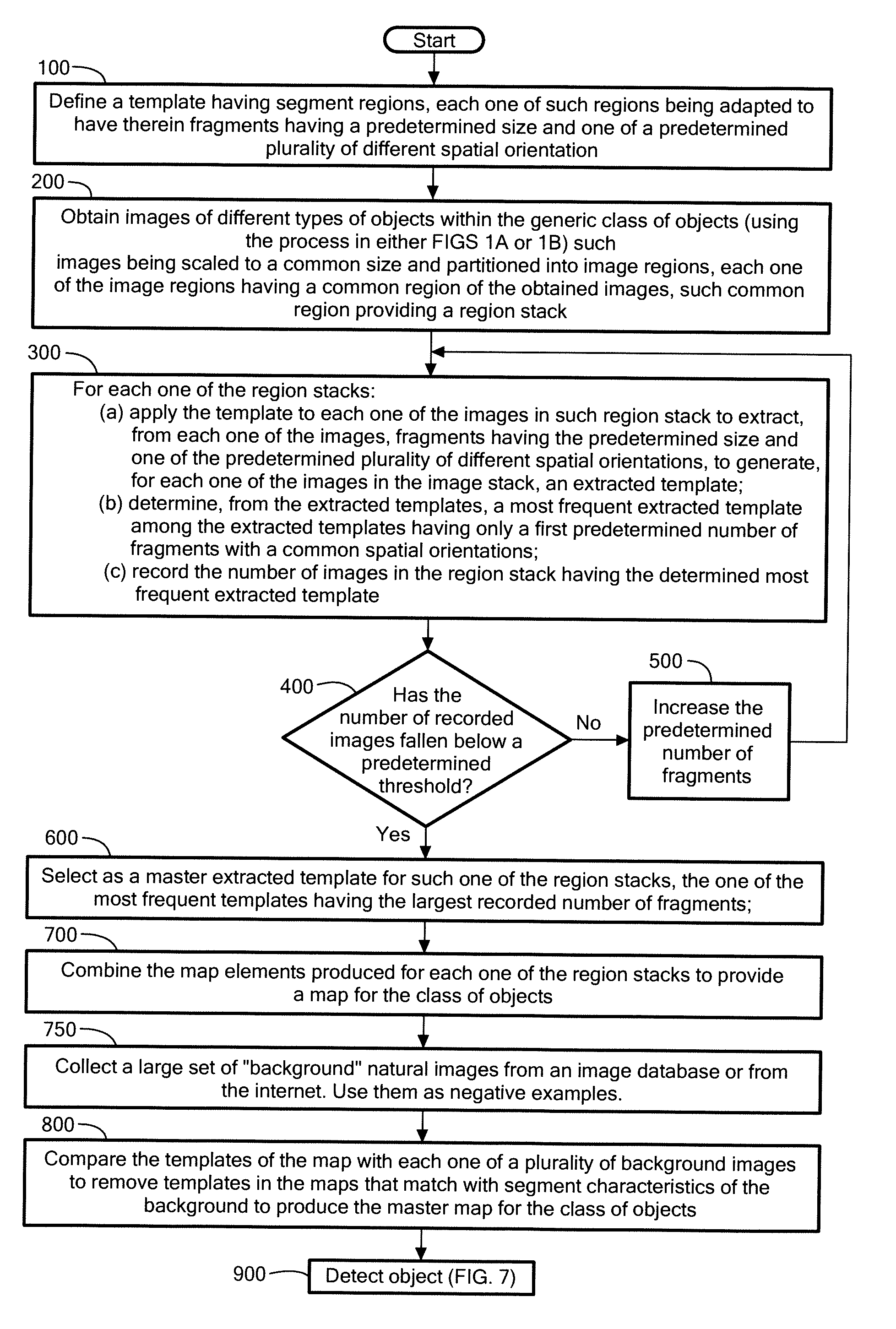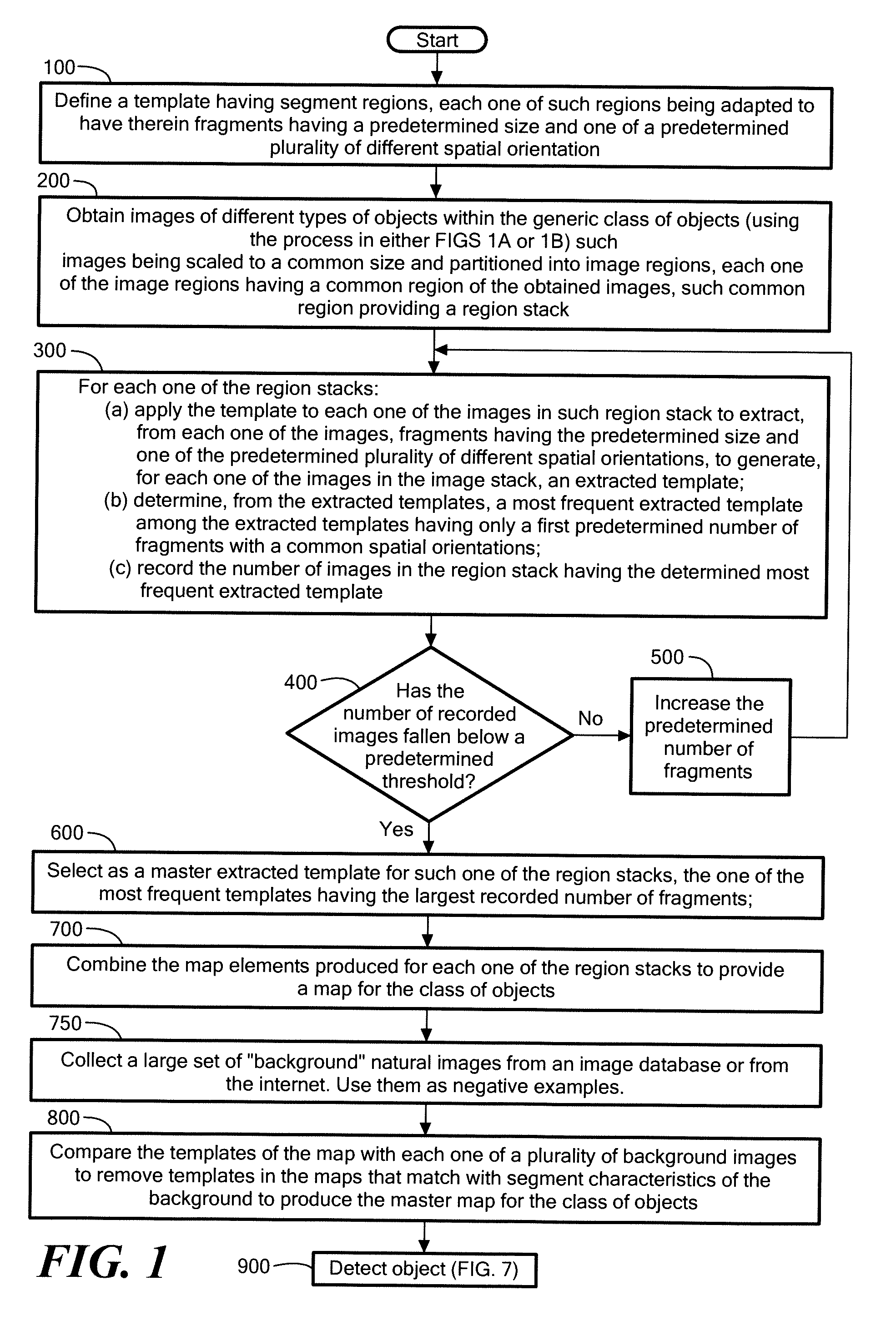Method for detecting objects using flexible edge arrangements
a flexible edge arrangement and object technology, applied in image analysis, instruments, computing, etc., can solve problems such as daunting selection challenges
- Summary
- Abstract
- Description
- Claims
- Application Information
AI Technical Summary
Benefits of technology
Problems solved by technology
Method used
Image
Examples
Embodiment Construction
[0038]Referring now to the flowchart in FIG. 1, the method for generating a master map for a generic class of objects, comprises defining a template 10 (FIG. 2A) having segment regions 12, each one of such regions 12 being adapted to have therein fragments, here edges of an object in an image, here an image of a car, such fragments having a predetermined size, here five to ten pixels in length, and one of a predetermined plurality of different spatial orientation, here horizontal, vertical, +45 degree; and +135 degree orientations, Step 100.
[0039]Thus, in this example, a star like template is selected. The template has a central origin segment region 12o and a plurality of pie shaped wedges segment regions 12 extending radially outwardly from the origin. Here there are eight wedge shaped segment regions 12 regularly spaced circumferentially about the central origin.
[0040]The basic ingredient in this representation is the so-called ε-edge, which is defined as a straight edge fragment...
PUM
 Login to View More
Login to View More Abstract
Description
Claims
Application Information
 Login to View More
Login to View More - R&D
- Intellectual Property
- Life Sciences
- Materials
- Tech Scout
- Unparalleled Data Quality
- Higher Quality Content
- 60% Fewer Hallucinations
Browse by: Latest US Patents, China's latest patents, Technical Efficacy Thesaurus, Application Domain, Technology Topic, Popular Technical Reports.
© 2025 PatSnap. All rights reserved.Legal|Privacy policy|Modern Slavery Act Transparency Statement|Sitemap|About US| Contact US: help@patsnap.com



